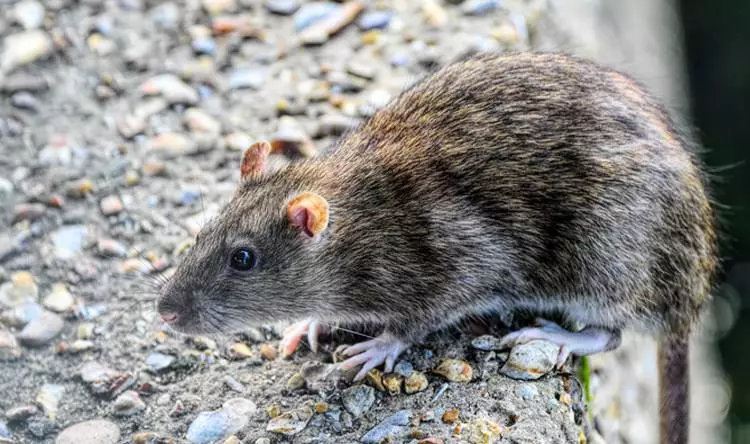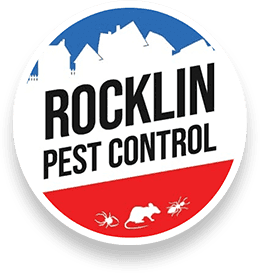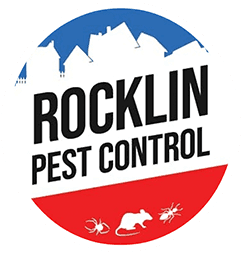What is the difference between a rat and a mouse?
 To the untrained eye, rats and mice might not look all that different, but there are a number of key characteristics that differentiate rats and mice. We’re talking about some physical distinctions as well as differences in patterns of behavior.
To the untrained eye, rats and mice might not look all that different, but there are a number of key characteristics that differentiate rats and mice. We’re talking about some physical distinctions as well as differences in patterns of behavior.
Many people often use the terms rat, mouse, and rodent interchangeably, but they are actually three distinct types of animals. Understanding the difference between these animals is important, as it can help with identification and pest control. In this article, we will explain the difference between rats, mice, and rodents.
Why do we need to know the difference between rats, mice, and other rodents? Mostly it’s to help with your pest control efforts– what might work for rats won’t necessarily work for mice, or perhaps even for other rodents, for that matter.
What Are Rodents?
There used to be a time when any small, wild mammal seen scurrying around your farm, garden, or home was referred to as a “varmint”.
Not all varmints are rodents, however. (Though it can be argued that all rodents are varmint critters!)
Rodents belong to a classification of mammals (of the order Rodentia) characterized by a pair of incisors in each of their upper and lower jaws. These front teeth are growing constantly, hence the need to just as constantly gnaw on something to somehow whittle these down to a more functional length.
An estimated 40% of all mammalian species are rodents, which should give you an idea of just how numerous they are.
Are Rats and Mice Rodents?
Both mice and rats are rodents. There are dozens of different species of both rats and mice, but in the United States, the most common rodent pests are:
- the Norway rat
- the roof rat
- and the house mouse
Physical Characteristics of a Rat vs. a Mouse
As far as physical characteristics go, here’s a quick way to tell the difference:
- The house mouse is quite small– about half an ounce. The head is comparably smaller than the rest of its body with a pointed snout. Ears are proportionately larger. Coloration is typically light brown with a touch of gray. Droppings are shaped like small rods.
- The Norway rat looks thick and bulky, weighing about 11 ounces. Bodies are brownish with shades of black. The snout is comparatively blunter, and the ears are short. Tails are commonly dark on top and pale underneath. Droppings are capsule-shaped.
- Larger than the house mouse but not quite as big as the Norway rat, at around seven ounces, the roof rat looks like the link or transition between the two. It has the characteristic pointed snout and large ears of the house mouse, with the general coloration and darker tail of the Norway rat. Droppings are shaped like spindles.
Where Do Rats Live?
Rats are larger than mice, with an average size of 10-12 inches long, not including their tail. They have long, scaly tails, and pointed noses. Rats are known for being social animals and are often found living in colonies. They can be found in both urban and rural areas, and are known to adapt well to changes in their environment. Rats are typically found in areas where they have access to food and shelter, such as residential homes, commercial buildings, sewers, and outdoor environments like gardens, fields, and forests. They are known to burrow and create nests in soil, under buildings, and in other sheltered locations.
Where Do Mice Live?
Mice are smaller than rats, with an average size of 5-7 inches long, not including their tail. They have round, fuzzy bodies, and small, pointed noses. Mice are also social animals and can form large colonies. They are known for their agility and can fit through very small openings. Mice are typically found in areas where they have access to food, water, and shelter. They can live in a variety of environments, including rural and urban areas, and can thrive in both indoor and outdoor settings. Mice are often found in homes, buildings, fields, and forests.
In conclusion, while rats and mice are both rodents, they have distinct differences in size, appearance, and behavior. Understanding these differences can help with identification and pest control. Rodents, in general, are a diverse group of animals that can be found in various environments all over the world. Knowing the habitats and behaviors of these animals is important for managing infestations and maintaining a healthy living environment.
What are The Differences Between a Rat and a Mouse?
Some more important differences between a rat and a mouse are:
- Behavior: rats are generally a lot more cautious, while mice are a lot more curious.
- Feeding: both mice and rats will eat anything, although mice prefer cereals, grains, and plants. Rats, on the other hand, will also have a preference for meat (including mice if really pressed for food!).
- Nesting: mice will prefer to have a nest hidden away but close to a food source. Norway Rats will choose to live in burrows, while the roof rat will prefer nesting in walls, attics, or trees.
- Territory: mice are generally afraid of rats, so you won’t commonly find mice in the same home as rats. You can have both Norway rats and roof rats, however, with Norway rats hanging around the lower floors of the building while roof rats stay towards the upper floors. These two rat species don’t get along, however, so they give each other a wide berth.
More Common Rodents (Other Than Rats and Mice)
Of the varmints and critters you are likely to find in North America, here is a short list of other mammals that fall in the classification of rodents:
- Beavers
- Capybaras
- Chinchillas
- Chipmunks
- Flying squirrels
- Gerbil
- Groundhogs
- Guinea pigs
- Hamsters
- Lemmings
- Marmots
- Porcupines
- Prarie dogs
- Squirrels
- Voles
Animals Commonly Mistaken as Rodents (But Aren’t)
To further make the distinction, here are some animals that are usually lumped together in the same category as mice and rats, but are not actually rodents— and are, instead, of a different category of small mammalian creatures:
- Bats. They might look like winged mice, but they’re of a totally different order, known as Chiroptera.
- Hedgehogs. Also not rodents, and in fact, are more closely related to shrews rather than, say, porcupines.
- Moles, which belong to a different mammalian order, Soricomorpha. Mole rats, however, are rodents– they live underground like moles but aren’t from the same order.
- Opossums. These critters are marsupials, which means their young must live in a pouch within their mother until they’re more fully developed.
- Rabbits. These were at some point classified as rodents, but after 1912, animal scientists put them in their own order (Lagomorpha) because their teeth were different from rodents.
- Raccoons. They were once placed in the same animal category as bears, but now have their own genus (Procyon).
Related articles:
- Study: Mice, Rats More Prevalent in Households Since Pandemic Broke Out
- 6 Reasons Why Rats Are Probably the Most Dangerous Household Pests Around
A Final Word on Rats, Mice, and Rodents
Not all small furry scurrying wild mammals are rodents, and not all rodents are household pests. In fact, many rodent-type creatures are kept as pets, or even bred for scientific research or even food (in some places).
Of the many rat and mouse species in the world, three are more commonly associated with pests to be taken seriously: the large Norway rat, the more limber roof rat, and the diminutive little house mouse.
These three rodents are notorious for sneaking into our homes and helping themselves to our food supply, even potentially causing damage by chewing on furniture or even wires or cables.
Being able to tell the difference between a mouse and a rat is very useful for extermination professionals, as they are able to employ the best possible measures to counter or control these nuisance pests with rodent control.
At Rocklin Pest Control, we have years of combined experience in helping homeowners get rid of all types of rodents, including both rats and mice. Contact us online or call (916) 884-6114 today to schedule a service or to learn more!

